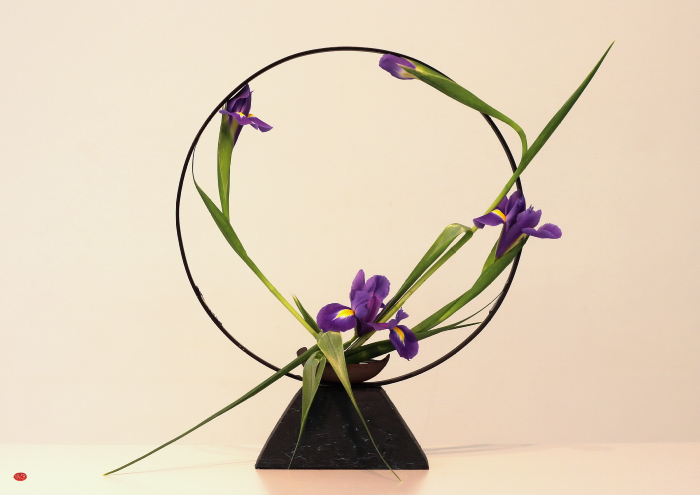The iris has captivated the hearts of the Japanese since ancient times. Kakitsubata, a native species of iris, became especially popular from a story in the tenth century, “Tales of Ise.” An aristocratic poet, weary of the fashionable life in Kyoto, set out on a long journey.
Arriving at Yatsuhashi ‘eight bridges’, he met with irises in a marsh crisscrossed with eight bridges, giving the area its name. The sight filled him with such longing for his wife in far away Kyoto that he wrote a verse for her, beginning each line with a syllable from the flower’s name, ka-ki-tsu-ba-ta. Ever since, kakitsubata and zigzag wooden bridges have been linked as a motif in Japanese art, literature, and gardening.
Japanese Artist Ogata Korin (1658~1716) captured this poetic story beautifully in a composition of folding screens featuring the famous eight bridges and irises:
https://www.metmuseum.org/toah/works-of-art/53.7.1-2
https://www.metmuseum.org/toah/works-of-art/53.7.1-2
In this arrangement, with minimal materials, I aimed to capture the poetic image of flowing irises, much like the scene that inspired the poet at Yatsuhashi. The four irises branch out form their small water vessel like the river into individual channels. The sense of motion is enhanced by keeping within the circular free flowing space.




